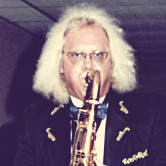Sax vs. Sax—Which is best?
by Paul R. Coats
Which is the best Saxophone? There is no definitive answer. All of the major manufacturers, and even the smaller manufacturers, know how to shape the bore, where to place the tone holes, and other factors in making a Saxophone play well. Just as in choosing an automobile, choosing a Saxophone depends on looking at the various features, and finding those that are meaningful to you.
This article is not going to tell you which is the “best Saxophone”, as that is not possible. In the following paragraphs, I will go over the features that make each of the major brands stand apart from its rivals.
Selmer is, by far, the Saxophone to which all others are compared. Years ago, Selmer set a very high standard with their famous Mk. VI–a quantum leap ahead of all the other manufacturers.
The current lineup from Selmer is comprised of the Super Action 80 Series II and Series III instruments. Both series are being marketed simultaneously. The Series III alto has an additional tone hole that opens for middle C#, bringing this usually flat note up to pitch. This feature is not included in the tenor or soprano, though the Selmer sopranos, and most other brands, already have a double pad assembly that accomplishes the same purpose. Several new models have been announced.
The Series II soprano has a range to high F# , and a straight, one-piece body. The Series III soprano has a range to high G, and two removable necks, one straight, one curved.
Selmer USA has two professional models, the AS-110 alto, and TS-100 tenor. These have many of the same features as the Series II Paris models, but at a lower price. The key hinges are of conventional design.
Selmer continues to manufacture their Eb Sopranino and Bb Bass Saxophones.
Yamaha is Selmer’s biggest rival in the Saxophone market. There are two professional models in the Yamaha lineup, the 62 series, and the Custom series. There are adjustments for each key in the upper and lower stack in the 62 series instruments. This makes setup of the instrument, and fine tuning by the repairman much easier. I am very surprised other Saxophone manufacturers have not copied this feature. The Custom models strangely lack this feature. The Custom also has Selmer Mk VI style ball joints on the side C and side Bb keys. Experience with the Mk. VI has shown that with years of wear, the ball joints get rather noisy. Fortunately, the Oleg side key silencers can correct this poor feature. Otherwise, the Custom is a very fine saxophone.
Though the 62 series is nice, the Custom series keywork really feels good to me. While nearly all manufacturers have gone from the round pearl front F to a spatula design, the shape and placement of the Custom’s front F spatula is the best I have seen. There is a subtle tone difference between the 62 and Custom, the Custom being slightly brighter to some listeners.
Yanagisawa, from G. Leblanc Corp. in the U. S., has some outstanding mechanical features. With the 990 and 991 series, Yanagisawa has incorporated many of the custom modifications offered by the top Saxophone repairmen. These include double arms on low C and B natural pad cups, and F# helper linkage to insure proper closing of this pad. The Yanagisawa Saxes have an excellent, tight “core” to the tone. This is subjective, but is my observation. This company is now offering solid silver body parts in its lineup.
Yanagisawa was the first major manufacturer in recent years to bring back the curved soprano. They have continued to refine this instrument by adding a front F spatula and improved, independent, palm keys.
Yanagisawa offers straight and curved sopranos, and a sopranino. The S991 soprano offers a high G key, and two necks.
Keilwerth Saxophones are designed by Mr. Herb Couf. In designing these Saxophones, Mr. Couf appears to have started with a clean drawing board, and not copied or modified Selmer’s Saxophones. They incorporate some features not found in the other top brands. One feature immediately noticeable is the larger radius of the bow, and bigger flare of the bell. This is Mr. Couf’s solution to the difficult low end. One drawback, these Saxes do not fit into just any case, but Keilwerth offers excellent, roadworthy cases as standard equipment. Rolled tone holes on their top models give increased pad life and better sealing. The palm keys are adjustable for height and angle. There is also an F# helper mechanism, bridging from the F pad, to positively close the F# pad. The most outstanding feature is their positive opening mechanism for the G# pad. No more wrong notes from a stuck G# on these Saxes!
Keilwerth has an excellent straight alto. The neck is of conventional design, but the main body tube is straight all the way to the end of the bell, which tips forward, Saxello style. The tone bounces off the floor, and has a milder, warm tone. This alto may appeal to classical players, for solo or quartet work. I would think it could be used to good effect in a pit orchestra.
Keilwerth also manufactures a bass Saxophone.
Of course, all of these manufacturers offer special finishes and options, such as black or white lacquer, black nickel, silver and gold plating, solid silver necks, and more.
—–
Sidebar: When a young player is in the market for his first professional Saxophone, I feel he should buy a recent model from one of the top manufacturers. I am somewhat concerned with young players being advised to purchase “vintage” instruments. Sometimes the student is led to believe a particular vintage Saxophone is the only one with which he can excel. The top vintage Saxophones are certainly nice instruments, and fun to play and own, but have many drawbacks for a young player. These instruments are no longer to be found at low prices, in sufficient quantity, and in top playing shape. They are delicate from years of hard use. Parts are scarce or must be hand made. A young player’s needs are better filled with a more modern instrument, with good parts support and dealer service.
—–
The best Saxophone? For me, it would have features from all of the instruments described above. It would have the front F spatula of the Yamaha Custom, and stack adjustments from the Yamaha 62 series. The keywork would have the double arms and F# helper from the Yanagisawa. It would have Keilwerth’s positive G# lifting mechanism, and bow and bell design. To keep the keywork tight, it would have Selmer’s spring-loaded hinges.
For classical playing, I would want the bore and tone hole design of the older Bueschers and Conns. For contemporary playing, however, the modern bore suits me just fine.
Unfortunately, all of these features are not found on one instrument. Who knows what the future will bring us? I am certain that Adolf Sax would be amazed, and pleased, with the advances in his instrument.


